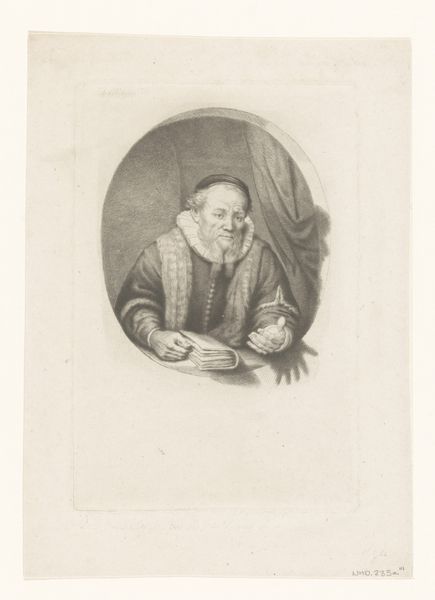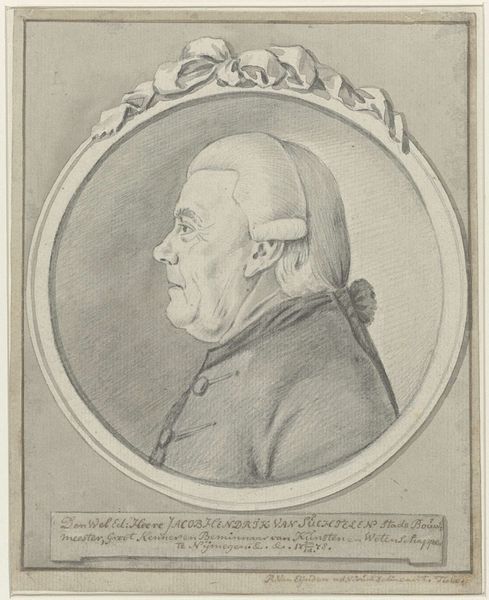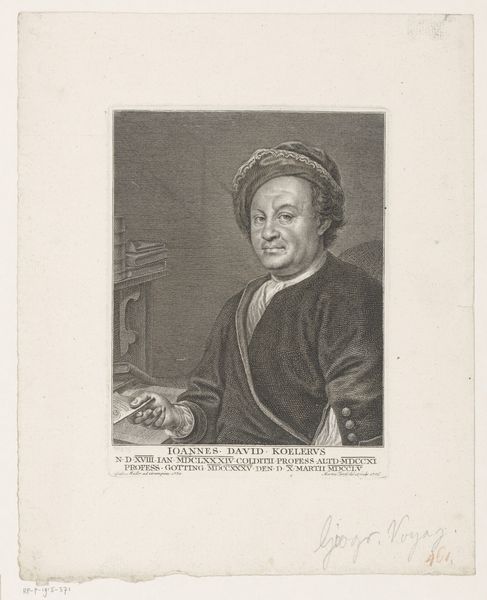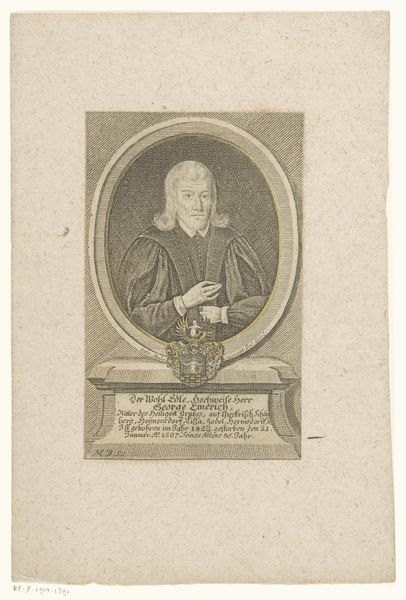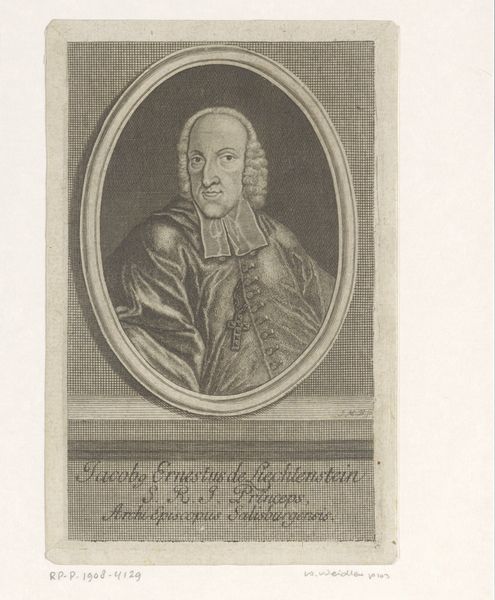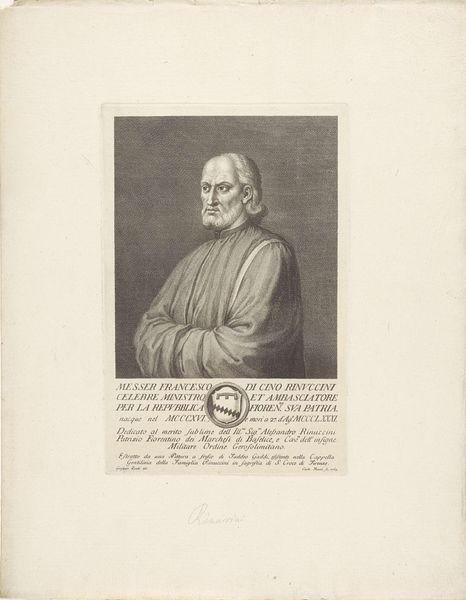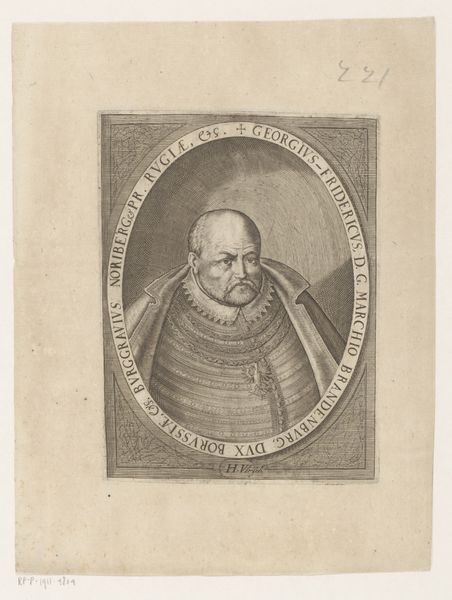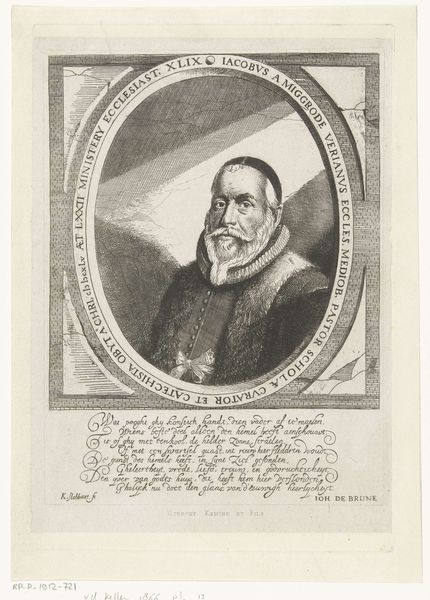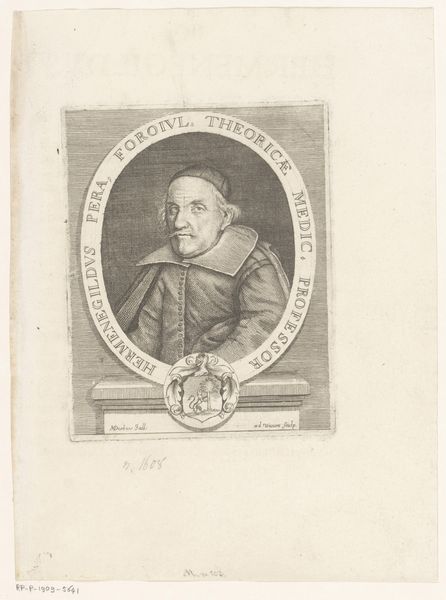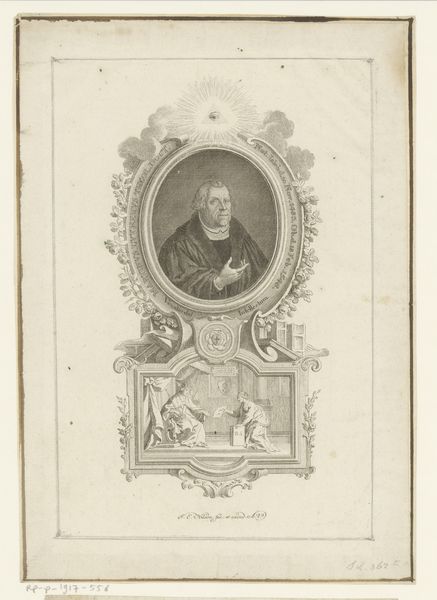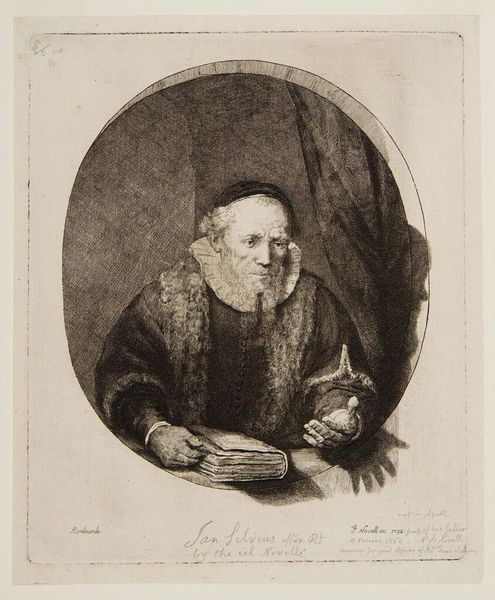
Dimensions: height 301 mm, width 200 mm
Copyright: Rijks Museum: Open Domain
Editor: Here we have "Portret van dichter Giovanni Maria Cecchi," made between 1739 and 1784 by Carlo Faucci. It’s an engraving. What immediately strikes me is the density of detail and the textures created through the engraving process. What do you see in this piece? Curator: As a materialist, I'm drawn to the production of this engraving. The labour involved, the skills required to translate an image into a matrix that can then be reproduced, is key. Think about the social context, too – this isn't just art, it's communication, likely destined for books or pamphlets. Consider the division of labor. Were these prints accessible to many, or were they mainly in the hands of the elite? What would such prints tell us about cultural life at the time? Editor: So, the medium itself is a crucial part of the story, not just what the portrait depicts? The printed text as well, maybe, since this work integrates text in the artwork. Curator: Exactly. The choice of engraving is deliberate, implying a certain kind of dissemination. Look at the ink, the paper. How durable are these materials? How might the life of this object – its potential for mass distribution, its vulnerability to decay – impact its meaning? We must account for the production means. Editor: That’s a completely different way of seeing it than I’m used to! I usually focus on the subject. This makes me wonder about the role of the engraver versus the painter of the original “Tela.” Curator: Precisely! The engraving process involves skilled craftspeople who are often overlooked in traditional art historical narratives. The hand-skills for this artisanal production are completely different, it´s not only about expressing individual "genius," but about craft, the materiality of labor. How are materials like printing press or etching tools important here? Editor: I never thought about prints as products of labor so much as replications of art. It’s like a whole hidden world opens up. Curator: And that hidden world reveals power structures, economic realities, and the fascinating interplay between art and everyday life.
Comments
No comments
Be the first to comment and join the conversation on the ultimate creative platform.
